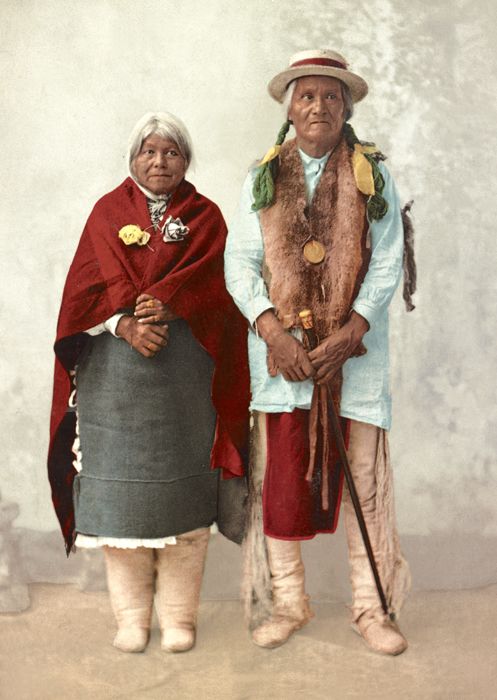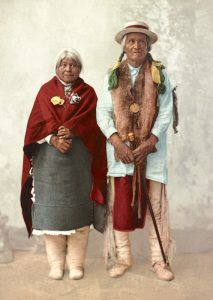
Echoes in the Desert: The Enduring Saga of New Mexico’s Piro Tribe
In the vast, sun-baked landscapes of the American Southwest, where ancient pueblos cling to arid mesas and the Rio Grande carves its path through history, stories of resilience and disappearance are etched into the very earth. Among these narratives, few are as poignant and complex as that of the Piro people. Once a thriving constellation of farming communities along the Rio Grande in what is now central New Mexico, the Piro faced a crucible of colonial expansion, disease, and forced migration that pushed them to the brink of historical oblivion. Yet, today, echoes of their language, culture, and identity persist, particularly in the borderlands of Texas, where their descendants are striving to reclaim a heritage long obscured.
The Piro’s journey from flourishing Pueblo society to a "lost tribe" and then to a re-emerging cultural force is a testament to the enduring spirit of Indigenous peoples. It is a story of survival, adaptation, and the unwavering human need to know and honor one’s ancestors.
The Ancient Roots: Masters of the Middle Rio Grande

Before the arrival of the Spanish in the late 16th century, the Piro people were a distinct linguistic and cultural group within the larger Pueblo world. Their traditional homelands stretched along the Rio Grande from around present-day Sevilleta in the north down to Senecú, near modern-day San Antonio, New Mexico. They were agriculturalists, cultivating corn, beans, and squash in the fertile river bottomlands, and skilled artisans known for their distinctive pottery. Their settlements, like Abo, Tabirá, and Gran Quivira (which, though often associated with the Tompiro, a related group, highlight the broader Piro cultural sphere), were well-established, multi-storied pueblos that served as centers of community life, trade, and ceremony.
Anthropologists and historians believe the Piro spoke a unique language, Piro Tanoan, distinct from their Tiwa, Tewa, Towa, Keres, Zuni, and Hopi neighbors. Their societal structure, like other Pueblos, was likely based on clans, with a rich ceremonial cycle tied to the seasons and the sacred landscape. They were a people deeply connected to their land, their traditions, and their ancestral spirits. Their pueblos were not just homes but living monuments to generations of life along the great river.
The Crucible of Conquest: Spanish Arrival and its Aftermath
The relative peace and self-sufficiency of the Piro world were shattered with the arrival of Don Juan de Oñate and his colonizing expedition in 1598. The Spanish, driven by the lure of gold and the zeal of religious conversion, quickly asserted control over the Pueblo peoples. For the Piro, this meant the imposition of the encomienda system, which demanded tribute in goods and labor, and the establishment of Franciscan missions. Pueblos like Socorro (named by Oñate for the "succor" or aid he received from the Piro there), Sevilleta, and Senecú became centers of forced conversion and cultural assimilation.
While the Spanish brought new technologies like metal tools and livestock, they also brought devastating diseases to which the Piro had no immunity. Smallpox, measles, and other contagions swept through the communities, decimating populations. The forced labor, religious persecution, and cultural suppression took an immense toll. Piro spiritual leaders were often punished or executed for practicing their traditional ceremonies.
"The Spanish saw our land as theirs for the taking, and our souls as theirs for the saving," one descendant might reflect, echoing a sentiment passed down through generations. "They built their churches on our sacred ground, but they could not erase what was in our hearts."
The Piro, like other Pueblo groups, found themselves caught between two worlds, struggling to maintain their identity and way of life under the oppressive weight of colonial rule.
The Great Divide: The Pueblo Revolt and the Flight South
.gif)
The boiling resentment against Spanish domination culminated in the Great Pueblo Revolt of 1680, a meticulously planned uprising that saw a unified front of Pueblo nations temporarily expel the Spanish from New Mexico. However, the Piro’s role in the Revolt was complex and ultimately tragic. Unlike many of their northern neighbors, who actively participated in the rebellion, the Piro pueblos largely remained neutral or even sided with the Spanish. This decision was likely driven by several factors: their geographical distance from the epicenter of the revolt, existing rivalries with other Pueblo groups, and perhaps a pragmatic assessment of their own vulnerability after years of population decline.
When Governor Antonio de Otermín and the surviving Spanish colonists retreated south from Santa Fe, they were accompanied by a significant number of Piro and Manso allies who feared retribution from the victorious Pueblo forces. This exodus marked the beginning of the Piro’s dramatic geographical shift. Thousands of Spanish and their Indigenous allies made their way to El Paso del Norte (present-day El Paso, Texas, and Ciudad Juárez, Mexico), establishing a new colonial outpost.
Here, the Piro were resettled in a new community they named Senecú del Sur, a poignant echo of their ancestral pueblo in New Mexico. Other allied groups, such as the Tiwa, established Ysleta del Sur, and the Manso settled near the mission of Nuestra Señora de Guadalupe. This period of forced relocation and resettlement fundamentally altered the Piro identity. They were now in a new land, reliant on Spanish protection, and increasingly intermarrying with the Manso and Tiwa peoples.
The Long Silence: Assimilation and the Fading Name
For centuries, the Piro in El Paso del Norte lived in the shadow of their more numerous Tiwa and Manso neighbors, and under the pervasive influence of Spanish and later Mexican culture. The distinct Piro language gradually faded, replaced by Spanish. Their traditional ceremonies and social structures became intertwined with those of other groups or were suppressed by the Church. The very name "Piro" began to disappear from official records and public consciousness, often subsumed under broader categories like "Indian," "Genízaro" (detribalized Indigenous people serving the Spanish), or "Tiwa."
This period represents the "long silence" of the Piro. While individual families certainly remembered their Piro lineage, and oral traditions likely persisted within households, the collective public identity of the Piro as a distinct nation largely vanished from the historical record in New Mexico. Even in the El Paso area, their distinctiveness blurred, and many descendants simply identified as "Hispanic" or "Mexican-American," unaware of or disconnected from their specific Indigenous roots.
The story of the Piro during this time is not one of complete eradication, but rather one of profound assimilation, a common fate for many Indigenous groups caught in the maelstrom of colonial expansion. Yet, the seed of their identity, though dormant, was not dead.
Whispers of Identity: The Modern Resurgence
In the late 20th and early 21st centuries, a remarkable phenomenon began to unfold across North America: a widespread movement of Indigenous identity reclamation. For the descendants of the Piro, this meant a renewed interest in their family histories, a deep dive into historical archives, and a powerful desire to bring their ancestral name back into the light.
In the El Paso, Texas, area, and specifically in the community of San Elizario, descendants of the Piro, Manso, and Tiwa people who accompanied the Spanish in 1680 began to organize. They recognized the shared history of their ancestors, who had intermarried and forged new communities together in exile. This movement led to the formation of groups like the Piro/Manso/Tiwa Indian Tribe of San Elizario, Texas, Inc., which seeks federal recognition for their combined heritage.
The quest for federal recognition is an arduous and often frustrating process. It requires extensive historical documentation to prove continuous existence as an identifiable Indian community, political authority, and distinct culture. For a people whose identity was largely suppressed and absorbed for centuries, gathering such evidence is a monumental task. Yet, for these descendants, it is a crucial step in healing historical trauma and securing their place in the modern Indigenous landscape.
"We were never truly lost," asserts a spokesperson for one of these groups. "Our ancestors carried our identity in their hearts, in their stories, in the very blood that flows through our veins. We are simply bringing that identity back into the light for the world to see."
Cultural Revival and the Future of the Piro
The modern Piro resurgence is not merely about political recognition; it is a vibrant cultural revival. Descendants are actively engaged in learning about their ancestral language, even if only fragments survive through historical linguistics. They are rediscovering traditional arts, ceremonies, and stories. Community gatherings, educational programs, and cultural events are becoming increasingly important avenues for sharing their heritage with younger generations and the wider public.
While the original Piro language is considered extinct, its study is a powerful act of remembrance and reclamation. Efforts are made to understand the Piro worldview through archaeological findings, Spanish colonial documents, and comparative studies with other Tanoan languages. The goal is not just to speak the words, but to understand the spirit behind them.
The Piro story is a powerful reminder of the lasting impact of colonialism and the incredible resilience of Indigenous peoples. It highlights how identity can be suppressed, fragmented, and seemingly erased, only to re-emerge with renewed vigor centuries later. The descendants of the Piro in New Mexico and Texas are not just reclaiming a name; they are reclaiming a narrative, asserting their right to exist as a distinct people, and contributing to the rich tapestry of Indigenous cultures in the Southwest.
Their journey from the ancient pueblos of the Rio Grande to the borderlands of Texas, through centuries of silence and into a new era of self-determination, is a profound testament to the enduring human spirit. The echoes of the Piro, once faint whispers in the desert winds, are growing stronger, reminding us that no history is ever truly lost, and every voice deserves to be heard.


